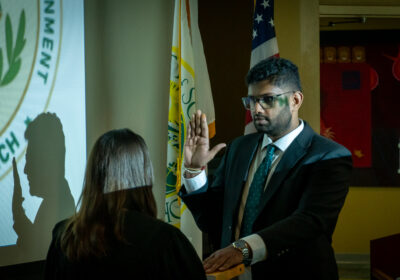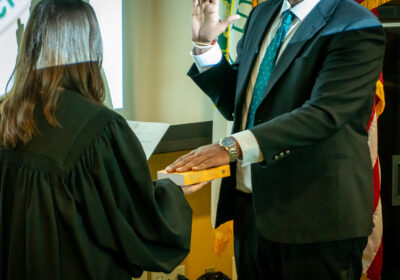Preliminary summer course schedule released, planner removed from OASIS

ORACLE PHOTO/LEDA ALVIM
With pandemic conditions largely uncertain for the summer semester, USF released preliminary course schedule offerings with the hope of getting students back on campus in time for the Summer B session.
The Office of the Registrar released the tentative summer course schedule Feb. 2 in a universitywide email to students. While students can start looking over the courses being offered in the summer, the schedule will continue to change until the first day of classes, according to Vice President of Student Success Paul Dosal.
The registrar’s office has not released statistics describing the number of online, in-person or hybrid course options yet, as the summer schedules are still changing.
With the hope of welcoming back a larger number of students in the coming semesters, Dosal said the university is moving forward with the intentions previously announced by Provost Ralph Wilcox to significantly increase the amount of in-person classes in the Summer B course schedule.
The amount and delivery method of offerings depend on COVID-19 conditions, and administration, faculty and staff are prepared to “rapidly adapt” to any mitigation requirements, including limited-capacity classes.
The administration decided that if class sizes still need to be limited in the summer, students who graduated high school in 2020 or 2021 will be given priority for in-person classes, over established USF students, to make up for a senior year that did not meet expectations.
“If, as we expect, summer classroom seat availability will continue to be limited due to physical distancing requirements, and recognizing the difficulties and disappointments faced by recent high school graduates, on-campus class priority will be set for freshmen entering USF in summer/fall 2020, and spring/summer/fall 2021,” Dosal said.
Dosal said that mitigation efforts will need to be maintained on campus in order for classes to resume in person.
The email also announced the Schedule Planner will no longer be used for class and schedule selection. Students will use the Course Selection and Registration functions in OASIS to navigate through class options and choose their schedule. The registrar’s office made this change to “streamline the process,” according to the email.
The administration decided to remove the program when the contract for the Schedule Planner needed to be renewed, according to Dosal.
“Before the Schedule Planner contract renewal, we surveyed students and found that the majority of students found the Schedule Planner only ‘somewhat helpful’” or ‘not at all helpful,’” Dosal said. “Given that feedback and the high cost of Schedule Planner, we felt it was prudent not to renew.”
The OASIS function allows students to filter class results the same way the Schedule Planner did. Students can search by course code, course grouping, campus, method of instruction or time.
However, students cannot make hypothetical schedule arrangements using this method. In the current iteration of the Course Selection and Registration functions, students have to mark down the course code or take a picture of the course that they select in the Course Selection menu, and then transfer all of the individual courses into the Registration function. The Schedule Planner function has already been removed from OASIS.
Without the Schedule Planner, there won’t be an option for students to view all of their courses at once before final selection. Dosal said changes will be made to the program, but gave no indication as to what these changes would be.
“We are making significant updates to the technology we already own in the coming year to ensure that we holistically improve our students’ registration process without increasing costs to students,” he said.
The whole process of deciding on course offerings has been a team effort, according to Dosal. All sorts of input, from students to public health officials, are necessary to decide on course offerings.
“Our faculty, learning designers and IT have worked together to design, develop and deliver quality courses,” he said. “The student learning outcomes have proven to the campus community that we remain committed to delivering the academic content and support necessary to keep students on the path to graduation.”
Dosal said the administration and registrar’s office are working to adjust the schedule offerings to the needs of students and take into account all external factors before the schedule is cemented.
“As was indicated in the communication from the registrar’s office, the 2021 summer course offerings that are currently viewable are preliminary and will continue to evolve as we work to meet a continuing student and incoming FTIC [First Time In College] demand,” he said.






